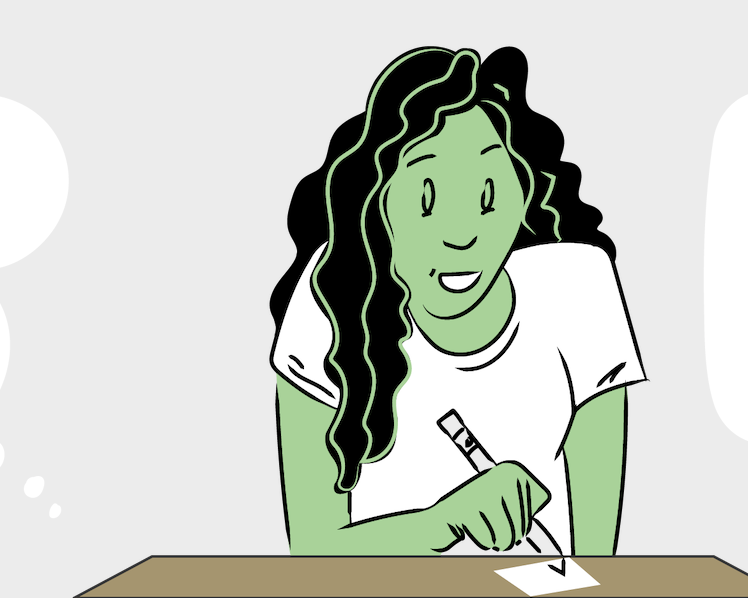Summary
In this session, participants will explore authentic approaches to literacy and comprehension using literature circles and modernized role cards that fit the needs of today's ELA classroom.
Essential Questions
What is comprehension?
What comprehension skills support choice reading?
How do literature circles and choice readings support comprehension skills?
Materials List
Literature Circles Presentation Slides
Literature Circles Notecatcher (attached)
Critical Thinking Wheel 1 (Engage) (linked)
Critical Thinking Wheel 2 (Evaluate) (linked)
Greek Myths Handout (attached; one story per group)
Literature Circle Role Cards (attached; one per group)
Authentic Learning and Teaching Handout (attached; one per student)
Learning Goals
Identify higher-order comprehension skills that support literacy
Develop an understanding of authentic strategies that engender comprehension in the classroom
Discuss and commit to the authentic literature circle format that supports literacy when using a choice reading
Engage
15 Minute(s)
Use the attached Presentation Slides. Go over the essential questions on slide 3. Briefly discuss the objectives on slide 4.
Move to slide 5 introduce the Engage: Critical Thinking Wheel.
Place participants into 4-5 breakout rooms. Tell learners that a participant in each breakout room will share their screen showing the Critical Thinking Wheel, spin the wheel for various participants, and facilitate a discussion by addressing the questions from the wheel. The questions are listed below.
Describe: What is comprehension?
Compare: How is comprehension similar and different when using the literature circle format?
Analyze: What strategies do you use to support authentic comprehension?
Apply: How does the literature circle format support comprehension?
Argue For or Against: What might be an argument for or against comprehension taught through choice reading versus forced reading?
Allow 8-10 minutes for this activity.
Close breakout rooms. Allow learners a few minutes to quietly reflect on the following questions:
What did you think of the critical thinking wheel?
Have you ever used something like this in your classroom? How did you use it?
Move through slides 6-10 and ask groups to share out some highlights from their discussion.
Allow 5-7 minutes for whole-group share-outs.
Explore
20 Minute(s)
Move to slide 11. Briefly explain what role cards are and how you will be using them in a literature circle.
Move through slides 12 - 15 as you explain the duties and order of each role.
After reviewing the roles, move to slide 16 to explain the literature circle activities. Break participants into groups. Provide participants a link to a Google folder where the breakout groups have been organized and paired with a specific story. This will allow participants to easily identify which myth they will be reading. The Literature Role Cards will also be linked at the top of each myth document.
Change to slide 17 and remind students of their tasks and order before starting breakout rooms.
Allow 12-15 minutes to work through roles.
Bring groups back together and go to slide 18 to facilitate a brief discussion by asking the following questions:
What do all of these stories have in common?
What are some common themes that can be pulled from these Greek & Roman myths?
What is an essential question that could be used for these Greek & Roman myths?
What did you enjoy about that experience?
How did the role cards affect your analysis of the text?
What was challenging about that experience?
Allow 5-8 minutes for discussion.
Explain
10 Minute(s)
Move to slide 19. Instruct students to consult the Authentic Learning and Teaching handout as they reflect upon the literature circles activity.
Then, have participants read the Literature Circles Benefits and Roles handout that expands on literature circles, their effectiveness, and how the roles can be updated to be more inclusive using technology.
After reading, move to slide 20 and complete a 3-2-1 strategy in a whole-group setting.
Discuss with participants how to overcome the roadblocks and obstacles mentioned in their 3-2-1s.
Allow 8-10 minutes to complete this activity.
Extend
15 Minute(s)
Move to slide 22. Instruct participants to consider one unit for which they could use a choice-reading literature circle format that authentically supports literacy and comprehension.
Ask participants to record the selected concept and comprehension strategy on the Literature Circle Notecatcher.
The Literature Circle Notecatcher asks them to complete the following:
Column 1 - List one upcoming unit with their activities/theme/essential question.
Column 2 - List 3-6 books/texts you could use in a literature circle to replace that unit while still maintaining a common theme/essential question.
Column 3 - What roles could you use in your literature circle? How could you incorporate the digital/tech aspect of literature circles?
Column 4 - How will this support comprehension?
Allow 10 minutes for participants to complete this activity.
Allow 5 minutes to share out.
Evaluate
10 Minute(s)
Move to slide 22.
Display the Evaluate: Critical Thinking Wheel and ask learners to share their understanding of comprehension through Literature Circle Role Cards by answering the questions from the wheel.
Allow 8-10 minutes.
Resources
Baldwin, J. (2004, March 15). Old Greek Stories. Retrieved from Project Gutenberg: https://www.gutenberg.org/files/11582/11582-h/11582-h.htm
K20 Center. (n.d.). 3-2-1. Strategies. https://learn.k20center.ou.edu/strategy/117
Pandora's Box, the Greek Myth of Pandora and her Box. (n.d.). Retrieved from Greek Myths and Greek Mythology. https://www.greekmyths-greekmythology.com/pandoras-box-myth/
Psyche and Eros Myth. (n.d.). Retrieved from Greek Myths and Greek Mythology.
https://www.greekmyths-greekmythology.com/psyche-and-eros-myth/
Word Wall. (n.d.) Engage: Critical thinking wheel. https://wordwall.net/resource/22461494/engage-critical-thinking-wheel
Word Wall. (n.d.) Evaluate: Critical thinking wheel. https://wordwall.net/resource/23169263/evaluate-critical-thinking-wheel
Reciprocal Teaching Role Cards. (2009). Solution Tree Press: go.solution-tree.com/literacy





